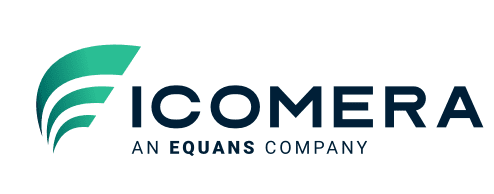In this article, we examine the role that satellite technology can play in ensuring uninterrupted connectivity for public transportation vehicles:
- Icomera’s SureWAN™ link aggregation protocol empowers transport operators to take full advantage of all wireless communications technologies, including emerging Low Earth Orbit (LEO) satellite technologies, as part of their overall connectivity strategy.
- Satellite networks become especially useful in scenarios in which vehicles travel through long stretches of rural or remote terrain with no existing cellular or fibre infrastructure, filling in “not-spots” along the route.
- However, given the cost implications of satellite compared to ground-based infrastructure, and the inherent risks involved in only relying on a single Communications Service Provider (CSP), we posit that transport operators would be wise to adopt a hybrid strategy which utilises satellite in tandem with cellular and trackside networks to deliver the fastest, most reliable connection possible.
The Rising Demand for Data on Public Transportation
The demand and consumption of Internet data by passengers and onboard systems on public transportation have steadily increased, alongside the implementation of each new generation of wireless communications technologies and standards.
In most countries, Mobile Network Operators (MNOs) and regulators face a challenge in delivering adequate coverage and capacity along public transport routes, given that areas of the route are generally sparsely populated, and the time and financial cost of developing high-capacity cellular networks that span entire long-distance routes is considerable. So, while coverage and capacity may be bolstered along shorter, urban routes, cellular “not-spots” are always likely to remain on longer routes that pass through rural/sparsely populated areas.
Overcoming connectivity issues requires innovative approaches to optimise bandwidth allocation and enhance the overall connectivity experience.
The Efficiency of Link Aggregation
SureWANTM, Icomera’s link aggregation protocol, enables transport operators to fully utilise the capabilities of multiple communication technologies, providing enhanced connectivity for both passengers and onboard systems.
SureWAN empowers onboard routers to intelligently connect to multiple communication networks and technologies simultaneously. By seamlessly combining the capacity of these networks, it ensures uninterrupted connectivity to vehicles and its passengers. Transport operators can leverage SureWAN to make the most of each network’s capacity, ensuring reliable and robust connections, even in challenging geographical environments.
In situations where a specific network connection is lost or weakened due to distance, SureWAN enables the onboard router to automatically maintain all other available connections. This eliminates the need for abrupt switching between communication networks or technologies since the aggregated connection to the vehicle always remains intact. Passengers and onboard systems can enjoy uninterrupted connectivity, regardless of network variations.

Driving Constant Innovation
Icomera continuously develops its solution portfolio to fully utilise emerging communication technologies. We stay ahead of the curve by embracing the latest communication standards as they emerge and develop.
Over 20 years ago, Icomera provided connectivity to the first trains using geostationary (GEO) satellite technology. However, cellular network technology rapidly developed and offered more cost-effective and high-performing results compared to GEO technology. From the earliest days of 3G to LTE-A and then 5G, Icomera has seamlessly integrated cellular technologies into our solution, to ensure the most robust and reliable connectivity. Leveraging each standard’s capabilities, we have enabled high-speed Internet access, multimedia capabilities, and immersive onboard experiences for passengers, alongside reliable connectivity for onboard systems across various transportation environments.
The recent emergence of Low Earth Orbit (LEO) constellations has reignited interest in satellite technology as an interesting option for transport operators to consider. Icomera works together with a number of leading satellite providers to include the technology as part of the connectivity mix for the rail segment.
The Use Case for Satellite Connectivity
By harnessing satellite connectivity alongside cellular and trackside networks, SureWAN helps address the connectivity challenges faced in different geographic locations. This ensures that moving vehicles have access to the fastest and most reliable connection possible, improving overall service performance.
Satellite networks are particularly valuable in scenarios where vehicles traverse long stretches of rural or remote areas with no existing cellular or fibre infrastructure. These regions, often referred to as “not-spots,” pose challenges for uninterrupted connectivity. By leveraging satellite technology, not-spots can be effectively covered, providing seamless connectivity throughout the journey. This approach enhances service performance by expanding coverage and capacity, overcoming the limitations of ground-based infrastructure.
Furthermore, satellite technology can serve as a crucial redundancy option in areas with limited cellular or fibre infrastructure, reinforcing connection reliability. With a backup satellite link, transport operators can mitigate service disruptions and maintain continuous connectivity during outages or failures in ground-based communications infrastructure. The integration of satellite technology with existing cellular and trackside technologies empowers operators to deliver robust, reliable, and uninterrupted connectivity to passengers.
However, it is important to acknowledge that ground-based network infrastructure, such as cellular and trackside, often offers data transmission with a lower cost base compared to satellite technology. In many urban environments, the aggregation of 5G and LTE-A networks using Icomera SureWAN provides sufficient connectivity in the majority of cases. Additionally, dedicated private trackside networks offer enhanced data throughput in rural locations or in challenging environments such as tunnels.
Lastly, it’s crucial to recognise the inherent risks of relying solely on a single Communications Service Provider (CSP). Aggregating all available connectivity across multiple CSPs, especially when these providers are well-established and local to the transport operator, offers clear benefits in terms of network reliability and availability.
Advantages of Low Earth Orbit (LEO) Satellites
The emergence of Low Earth Orbit (LEO) satellite technology offers several advantages over Medium Earth Orbit (MEO) and Geostationary Equatorial Orbit (GEO) satellites, making it an appealing choice for transport operators to consider.
- Reduced Latency: LEO satellites orbit at altitudes up to 2,000 km, much closer to the Earth’s surface than either MEO and GEO satellites; for comparison, GPS satellites orbit in MEO at around 20,200 km, while GEO satellites reside at 35,786 km above the equator. The proximity of LEO satellites to the Earth means signals travel a shorter distance, resulting in lower latency.
- Higher Data Throughput: LEO satellites also provide higher data throughput than MEO and GEO satellites. They can transmit and receive data at a faster rate, allowing for more efficient data transfer.
- Cost-Effective Deployment: Launching satellites into LEO is relatively easy and affordable compared to MEO and GEO satellites, allowing them to better keep pace with technological innovation. The lower altitude and smaller orbital radius of LEOs reduce the energy requirements for launch, making global coverage more accessible for satellite constellations.
- Increased Reliability: LEO satellites can be interconnected in a mesh network configuration, allowing cross-linking between satellites. This interconnectivity enhances the overall reliability and redundancy of an LEO system. If one satellite experiences an issue or goes offline, the other satellites within the network can compensate for the loss, ensuring uninterrupted service. And, Since LEO satellites can more easily provide better global coverage, it becomes easier to establish connections with multiple satellites from any position.
Integrating Satellite as Part of a Hybrid Approach
Given the value and limitations of different communications technologies within different environments, we believe that optimum connectivity for transport operators is best achieved by leveraging a combination of two or more technologies together using aggregation.
Incorporating satellite technology as part of a hybrid approach presents a viable solution for transport operators seeking to provide reliable Internet connectivity across routes that span rural terrain which is not served well by cellular infrastructure. By combining the advantages of different technologies across different geographic locations, transport operators are well placed to deliver seamless connectivity throughout a vehicle’s journey.
Icomera’s dedication to developing and integrating emerging communication technologies, including satellite, ensures that transport operators can harness the full potential of connectivity to meet the evolving demands of passengers and onboard systems in the digital age. As technology continues to advance, this hybrid approach holds the promise of delivering seamless, reliable, and cost-effective connectivity for transportation systems worldwide.
Satellite networks become especially valuable in remote areas without cellular or fibre infrastructure, filling in “not spots”
Looking to The Future
With unrivalled industry expertise and experience, and a strong Intellectual Property (IP) portfolio encompassing numerous satellite-focused patents, Icomera is well-positioned to provide expert assistance to clients seeking to implement satellite connectivity as part of their overall solution.
We are committed to supporting multiple satellite providers, incorporating them into Icomera’s solution portfolio as and when they attain the necessary level of reliability and maturity to effectively meet the specific needs of our clients. By collaborating with a number of satellite solution providers, we can offer our clients greater flexibility, ensuring that their connectivity needs are met irrespective of geographical location or specific operational requirements.
Furthermore, we are actively involved in the development of certified equipment tailored to facilitate the seamless integration of satellite technology within rail environments. We understand the evolving nature of the satellite industry and the importance of staying at the forefront of technological advancements. Our commitment to research and development enables us to remain at the cutting edge of satellite connectivity solutions.
By investing in innovation and collaborating with satellite industry leaders, we continuously enhance our capabilities, ensuring that our clients benefit from the latest advancements in satellite technology now, and in the years ahead.

Read our full Satellite Connectivity white paper…


